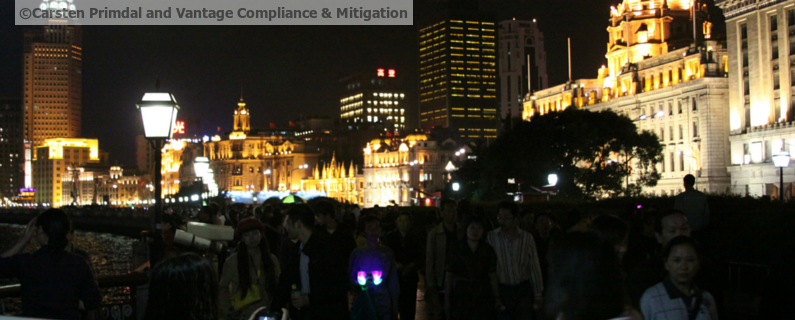Managing production processes for goods that are crafted from a diverse base of materials is a complex process. It requires simultaneous attention to both minuscule details and long-range strategies. For thirty five years, China has been the world’s key industrial hub in which to find materials and supplier sources for thousands of products. Even its recent economic challenges can’t extinguish the opportunities that continue to draw in contractors to newly developing manufacturing bases. For corporations that are considering accessing the Chinese supply chain for some or all of their manufacturing processes, understanding the Chinese communications culture first will avoid missteps and costly mistakes.
Low Prices Should Not Be the Sole Determiner of Factory Choice:
One reason Western developers have problems in China is because they take a western approach to sourcing their contracts. Being accustomed to high standards and significant oversight of processes in western manufacturing arenas, Western companies often believe they can apply the same assumptions of quality to their expectations of Chinese companies. However, because they have limited experience in the nuances of the Chinese industrial sector, they often fail to investigate the full range of the subject supply chain. With little or no comprehension of the nuances of systems that are unique to the Chinese culture, many western companies are at risk to suffer major manufacturing losses, such as:
– inconsistent product quality throughout one run, or over the course of several runs;
– too many touch points involved in transactions, resulting in delays, miscommunications, and even theft;
– poor logistics coordination from a dispersed base of suppliers, leading to missed deadlines, inappropriate or mismatched materials or substandard materials, and
– inefficient and slow product development and design processes.
In short, if the corporation doesn’t have a set-out sourcing strategy that accommodates both the western expectations AND the Chinese supply chain realities, then it is likely that their production values will not meet their product goals.
Communication is Key To Managing Costs:
“Cost” is an obvious factor, but many companies often don’t know how to inquire into the true cost of sourcing a product line and find themselves surprised by the resulting expenses. As examples, to accurately estimate the “total cost” of a product manufactured with materials from many suppliers, international producers should become familiar with these two elements of production line details:
Transportation Costs:
It is not just the price of fuel and amortization of the vehicle, transportation costs in China include a varied list of fees and duties, including freight values for materials coming from other destinations; customs, duties and tariffs for crossing borders, and even (potentially) brokerage fees for agents who promise to deliver supplies on a timely basis. In the event of production delays anywhere along the supply chain, there may also be increased transport costs for alternative freight options, and additional customs fees or tariffs.
Risk Management Costs:
Many times, the Chinese factory is one part of a larger, international supply chain. The complexity of the chain itself presents a series of risks. Currency risks arise when any one country within the chain experiences currency value fluctuations which make the contract more expensive. Politics may also play a part of escalating risks if elements of the chain are located in politically unstable locations. And extended lines of communications of proprietary information increases the risk of competition based on intellectual property theft. Cheap knock-offs have derailed the value of many internationally produced goods.
Long Term Relationships Prevent Communication Breakdowns:
Enterprises with long histories in the Chinese factory sector have an edge over newly joined entities because they have established connections and relationships with Chinese producers in whom they can trust. Accordingly, their evaluations of risk and cost for any manufacturing strategy are often highly informed before negotiations even begin, which saves a lot of money and time.
Without sufficient discussion or information regarding supplier qualifications, quality controls, and logistics support, your business may face unexpected cost overruns that erode profits and reduce the value of the goods produced in your supply chain in China. To learn more about how to communicate with your Chinese manufacturer, contact me for an obligation free talk.
If you would like to know more, you can also download a free report “8 Problems Businesses face when sourcing from China here.
https://vantagecompliance.com/8-problems-businesses-face-when-sourcing-goods-from-china-bg/
This blog was written by Carsten Primdal, an independent consultant who helps businesses that have manufacturing done overseas – especially in China – to minimize supply chain risk.Drawing on years of on-the-ground experience and a strong understanding of the cultural and commercial context, Carsten is passionate about helping his clients gain greater control over the risks most companies face knowingly or unknowingly.
Urgent issues? Questions? Concerns? If you are considering/already buying from Chinese factories and would like more information, please feel free to contact us for an obligation free talk.
I can be reached at carsten@vantagecompliance.com or on (+61) 413 089 020
You may also like to read some of my other blogs. They can be found here:
Protect Your Manufacturing Outcomes By Avoiding Product Delays and Failures
Reputable Chinese Suppliers Maintain China’s Industrial Reputation
China’s Economic Overhaul Will Improve Global Supply Chains
Manufacturing Compromises Can Ruin Your Brand
Tenacity and Communications Reduce Risk of Chinese Child Labour Law Violations
Safety Study Identifies Chinese Supply Factory Risks
China Manufacturing Industry Challenges Trigger Inspections, Consequences
Risk Mitigation Can Prevent Chinese Supply Chain Disruption
Tips and Traps of Contracting in China
Keeping Your Supply Chain Green: Avoiding the Environmental Polluters when sourcing in China
Ensure Timely Contract Compliance with a Chinese Supply Chain Expert
Two Key Questions To Answer Before Onboarding Your Chinese Manufacturing Supplier
Off-Shore Manufacturer’s Certificates Require Credibility
Factory Planning Principles Improve Supply Chain Quality
Mitigating Risk of Quality Fade in Overseas Manufacturing Facilities
How to Assure your “Green” Supply Chain in China
ChAFTA Opens Doors for increase in China-Australia Business relations
China Verification for Your Manufacturing Supplier Needs
Australian Industry Agreements Encourage More Chinese Factory Verifications
China Factory Verification: Check Before You Buy
Frozen berry recall highlights potential supply chain risks in offshore production



